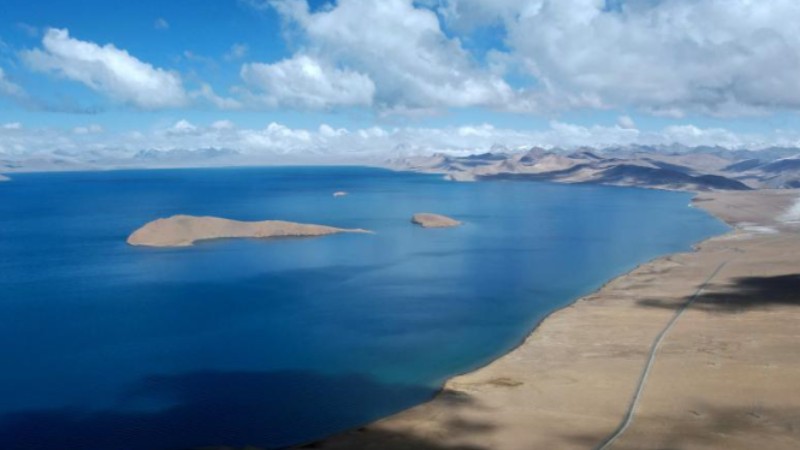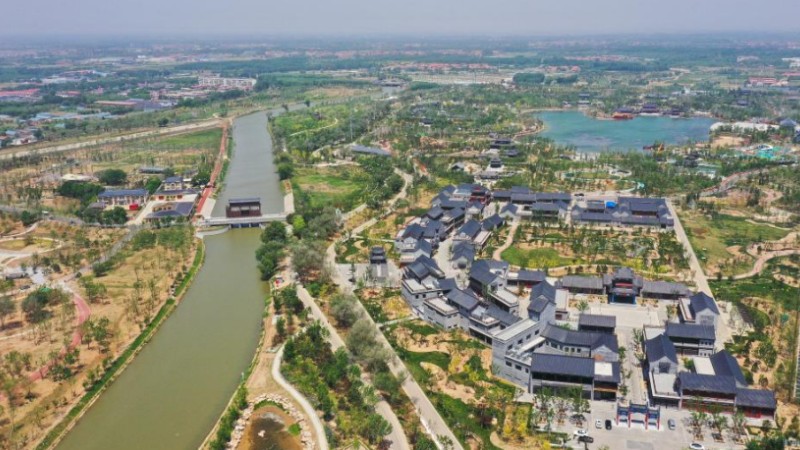Nation makes big strides in archaeology
Project: Findings present 'rich cultural legacies'
Chinese research on ancient civilization has made remarkable progress in the past year, since President Xi Jinping called for further efforts to advance the study of Chinese civilization.
While presiding over a group study session on May 27 last year of the Political Bureau of the Communist Party of China Central Committee on a national-level, decadeslong research program that traces the origins of Chinese civilization, Xi called on academics to forge ahead and make full use of the fruits of the program, which demonstrates China's 5,000-year history through abundant archaeological discoveries and findings.
Xi, who is also general secretary of the CPC Central Committee and chairman of the Central Military Commission, emphasized that more achievements in the field can help the nation strengthen cultural confidence and stick to the path of socialism with Chinese characteristics, while exploring and explaining how a sense of community among the Chinese people was developed, and how Chinese of various ethnic groups are united in diversity.
The program, involving about 400 scholars across the country, was launched in 2002 and mainly focuses on key sites, mostly between 3500 and 1500 BC.
"We have had many outcomes, but our understanding of a clear development path of civilization still needs exploration at a deeper level," said Wang Wei, director of the Chinese Academy of Social Sciences' Academic Division of History, who delivered a lecture during the 2022 group study. "We have to eye more areas and expand relevant comparative studies to a much wider time span to look for the roots and key ingredients of a civilization."
In the past year, Chinese researchers have lived up to Xi's expectations and yielded new findings in the field.
Earlier this month, in Zhengzhou, Henan province, the country's leading scholars gathered at a forum to report recent discoveries covering a long span of time.
At the 10,000-year-old Sitai site in Shangyi county, Hebei province, archaeologists unearthed ruins of six semi-basement dwellings, which are believed to be the earliest known "houses" in China.
The discovery "provided crucial materials for the study of key issues, including Chinese cultural lineage, human migrations and the origins of agriculture," said Zhao Zhanhu, a researcher at the Hebei Institute of Cultural Relics and Archaeology.
In Hanshan county, Anhui province, archaeologists recently found massive ruins of a group of buildings at the Lingjiatan site, which dates to between 5,300 and 5,800 years ago. More findings of jade artifacts and sites for major sacrificial ceremonies have enabled people to learn about a prehistoric ritual system and complicated society.
Archaeologists working at the Nanzuo site in Qingyang, Gansu province, unearthed the ruins of a huge "palatial city" dating back 4,700 to 5,200 years. The ruins provided insights into a hub of power on the edge of China's Loess Plateau.
Meanwhile, findings at the Bicun site in Lyuliang, Shanxi province — stone fortress ruins dating back between 3,800 and 4,200 years — have marked the frontier of a regional power, and they might have unveiled only the tip of a complicated defensive system.
"These discoveries have presented different formats and the rich cultural legacies of the infancy of Chinese civilization," said Chen Xingcan, director of the Chinese Academy of Social Sciences' Institute of Archaeology. "The findings, in pivotal locations and crucial eras, jointly portray a brilliant picture of how a united community emerged amid the diversity."
After long-term communication among different regions, the Erlitou site, a cultural core, appeared in present-day Henan province, absorbing various advanced elements of civilization. It was generally considered the capital of the Xia Dynasty (c.21st century-16th century BC), the first central dynasty recorded in Chinese history.
In March, the crisscrossing road network near the site's palace area was listed among China's top 10 archaeological discoveries of 2022.
The governance system of a central dynasty was further consolidated during the following Shang Dynasty (c.16th century-11th century BC), as demonstrated by the Yinxu Ruins site in Anyang, Henan. New findings at the royal mausoleum of Yinxu were also on last year's list of top 10 findings.
The site, the Shang capital during its late period, is also home to 3,300-year-old oracle bone inscriptions, the earliest known, fully developed Chinese writing system, whose lineage is the same as the Chinese characters used today.
President Xi visited the site in October. He said the Chinese characters are extraordinary and play an important role in the formation and development of the Chinese nation, and he recognized the archaeologists for having done a great job in this regard.
To that end, the Palace Museum in Beijing announced on May 22 the publication of its first two volumes of the book Yinxu Oracle Bone Inscriptions in Palace Museum Collection.
"Despite researchers' lasting devotion to academic studies, more effort is still expected in order to promote our findings among the public," said Wang Xudong, director of the Palace Museum. "We can only deepen people's understanding on the ordered lineage of our civilization through more creative ways of revitalizing the relics."
Wang Wei, from the Chinese Academy of Social Sciences, said that more publicity of recent academic achievements is conducive to the origin-tracing program.
To that end, he and several other scholars are set to participate in the production of the second season of City of Museums, a popular reality show from Beijing TV. Tracing the origins of Chinese civilization will be the theme of the new season, which will premiere in early June.
The origin-tracing program not only seeks to engage the public, but also looks to a global horizon.
In recent years, Chinese archaeologists have embarked on journeys overseas to the core areas of the world's main ancient civilizations, thus developing a more complete understanding of the concept of civilization.
For example, in Luxor, Egypt, Chinese archaeologists made excavations at the Temple of Montu site from the New Kingdom period, which was roughly contemporaneous with the Yinxu Ruins.
In Dobrovat, a village in northeastern Romania, a Chinese team explored the similarities and differences between painted pottery items of the local Cucuteni-Trypillia Culture and the Yangshao Culture of the same era in North China, gaining a better understanding of how agrarian cultures developed across Eurasia.
Following a hiatus caused by the COVID-19 pandemic, these cooperative projects have resumed work this year.
"A deeper understanding of other civilizations can help us better review the characteristics of our own," Wang Wei said.
Photos
Related Stories
- Book of Xi's discourses on sci-tech self-reliance published
- Experts say Xi offers significant guidance for China-Eurasia cooperation
- China, DRC upgrade ties to comprehensive strategic cooperative partnership
- Quotes from Xi: Nothing is worth more than good word of mouth
- Stories of state gifts to Xi: Highest honors awarded by Central Asian countries
- Xi: BRI helps boost Eurasian collaboration
- Xi sends congratulatory letter to Zhongguancun Forum
- Stories of state gifts to Xi: 30 years of friendship between Xi, people in U.S. bears witness to China-U.S. exchanges
- Full text of Xi Jinping's letter to teachers and students from Macau University of Science and Technology
- Xi calls for efforts to further high-quality development of audit work in the new era
Copyright © 2023 People's Daily Online. All Rights Reserved.









